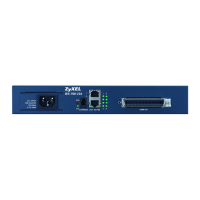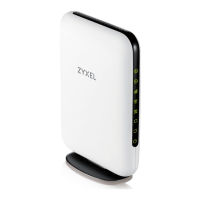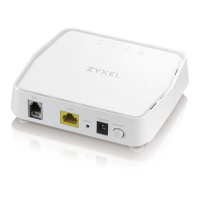Chapter 7 Interfaces
USG FLEX H Series User’s Guide
99
Types of Interfaces
You can create several types of interfaces in the Zyxel Device.
• Setting interfaces to the same port role forms a port group. Port groups creates a hardware
connection between physical ports at the layer-2 (data link, MAC address) level. Port groups are
created when you use the Interface > Port screen to set multiple physical ports to be part of the same
interface.
• Ethernet interfaces are the foundation for defining other interfaces and network policies.
• VLAN interfaces receive and send tagged frames. The Zyxel Device automatically adds or removes
the tags as needed. Each VLAN can only be associated with one Ethernet interface.
• Bridge interfaces create a software connection between Ethernet or VLAN interfaces at the layer-2
(data link, MAC address) level. Unlike port groups, bridge interfaces can take advantage of some
security features in the Zyxel Device. You can also assign an IP address and subnet mask to the
bridge.
• Trunk interfaces manage load balancing between interfaces.
• PPPoE interfaces support Point-to-Point Protocols (PPP). ISP accounts are required for PPPoE interfaces.
• VPN Tunnel Interface (VTI) encrypts or decrypts IPv4 traffic from or to the interface according to the IP
routing table.
• Link Aggregation Group (LAG) interfaces combine multiple physical Ethernet interfaces into a single
logical interface, thus increasing uplink bandwidth and availability in the event a link goes down.
Port groups and trunks have a lot of characteristics that are specific to each type of interface. The other
types of interfaces, including Ethernet, VLAN and bridge, have a lot of similar characteristics. These
characteristics are listed in the following table and discussed in more detail below.
Note: The format of interface names other than the Ethernet and ppp interface names is
strict. Each name consists of 2-4 letters (interface type), followed by a number (x). For
most interfaces, x is limited by the maximum number of the type of interface. For VLAN
interfaces, x is defined by the number you enter in the VLAN name field. For example,
Ethernet interface names are wan1, wan2, lan1, lan2, dmz; VLAN interfaces are vlan0,
vlan1, vlan2...and so on.
Table 55 Interface Characteristics
CHARACTERISTICS ETHERNET ETHERNET VLAN PPPOE BRIDGE
Name* wan1, wan2 lan1, lan2 vlanx pppx brx
Configurable Zone No No Yes Yes
IP Address
Assignment
Yes
Static IP address Yes Yes Yes Yes Yes
DHCP client Yes No Yes Yes Yes
Interface
Parameters
Yes
Packet size
(MTU)
Yes Yes Yes Yes Yes
DHCP Yes
DHCP server No Yes Yes Yes
DHCP relay No Yes Yes No Yes
Connectivity Check Yes No Yes No Yes

